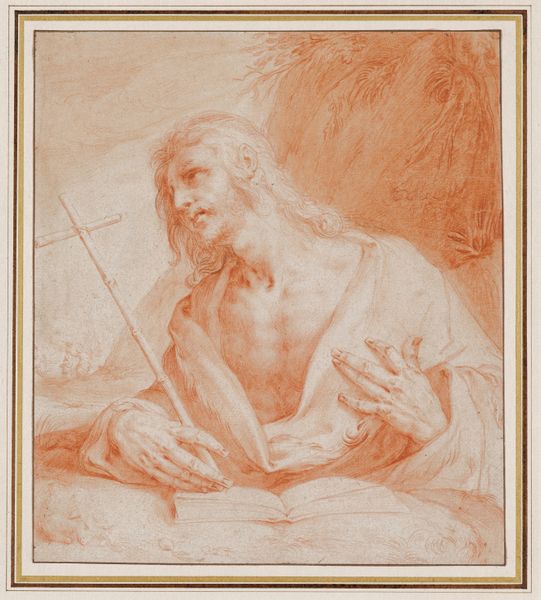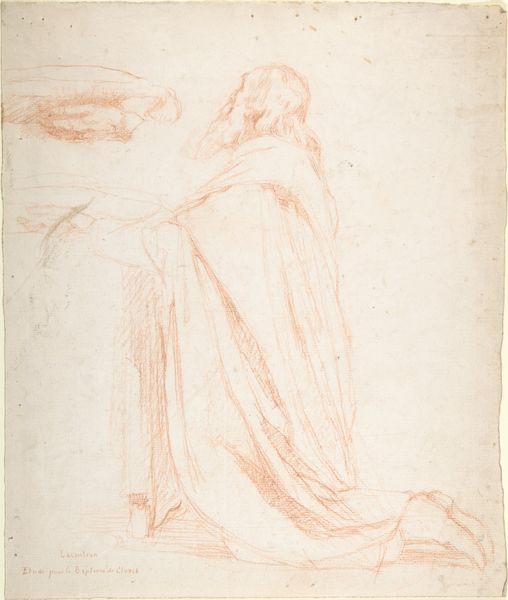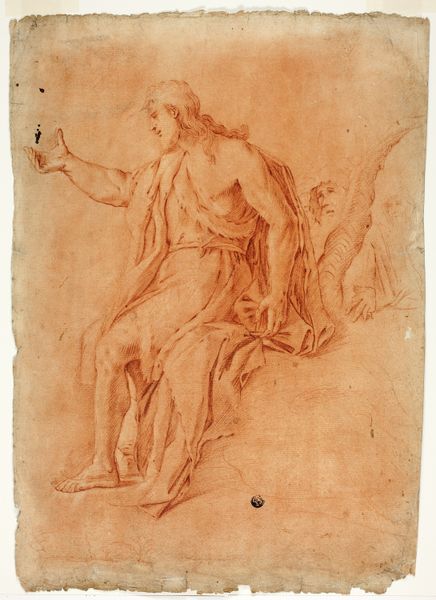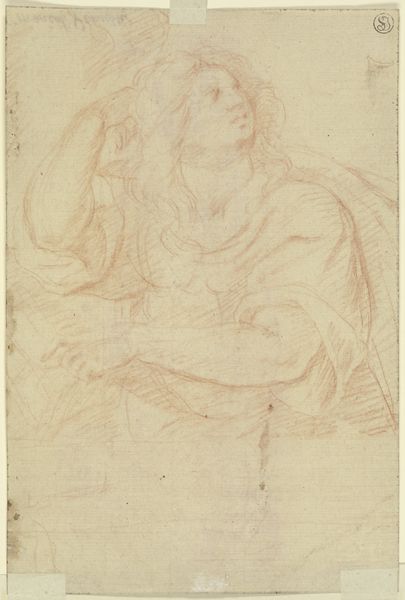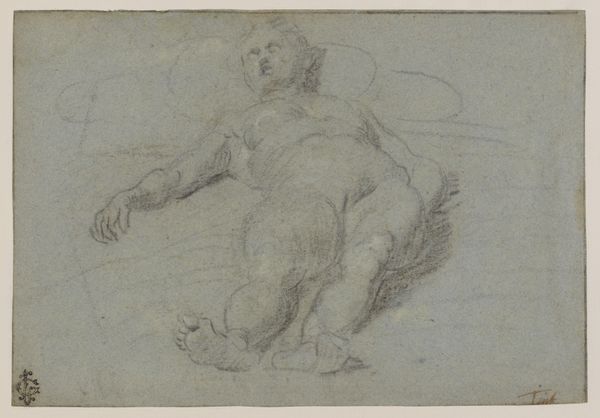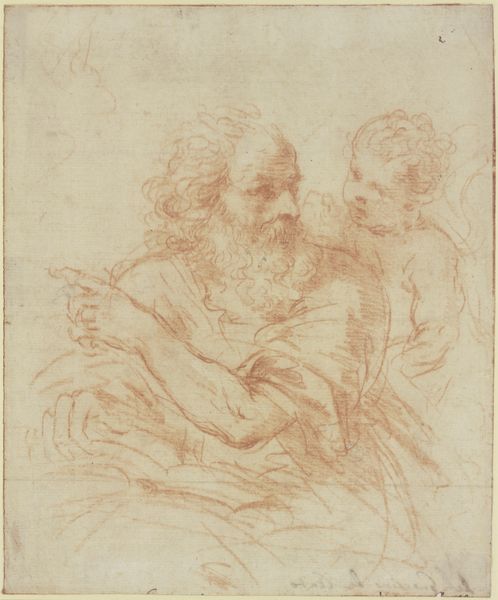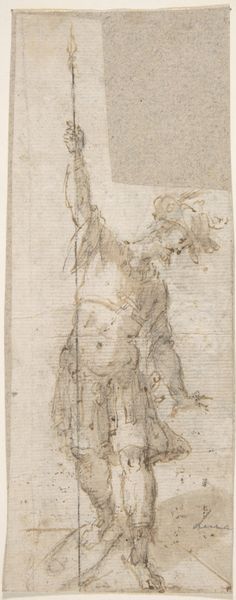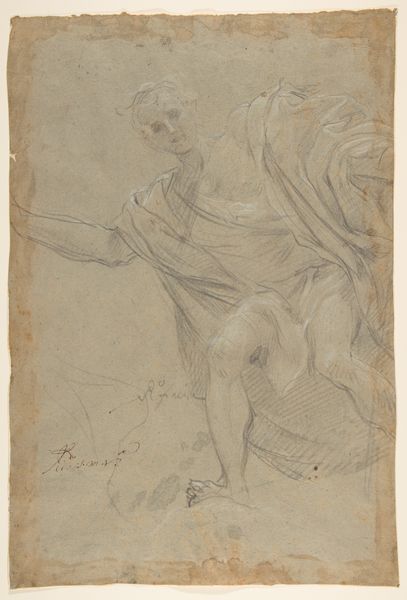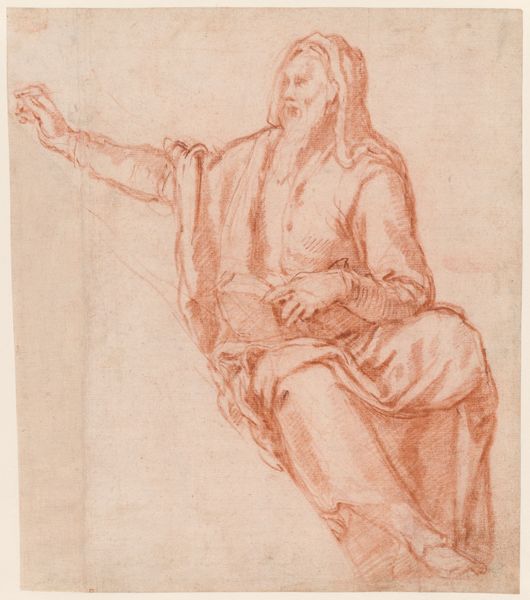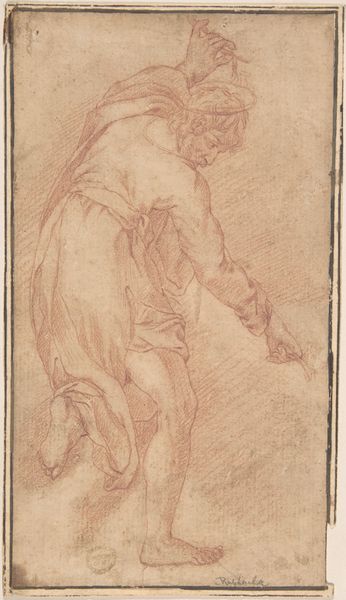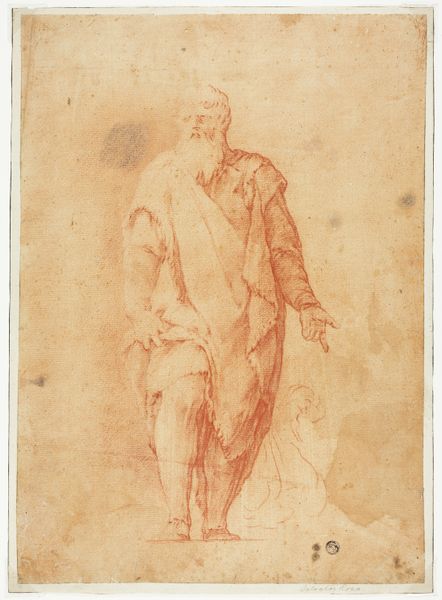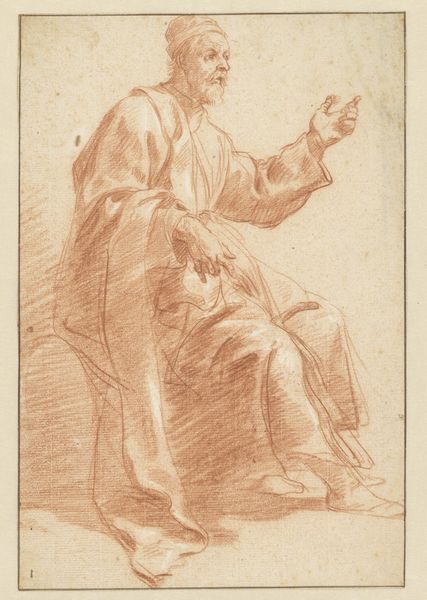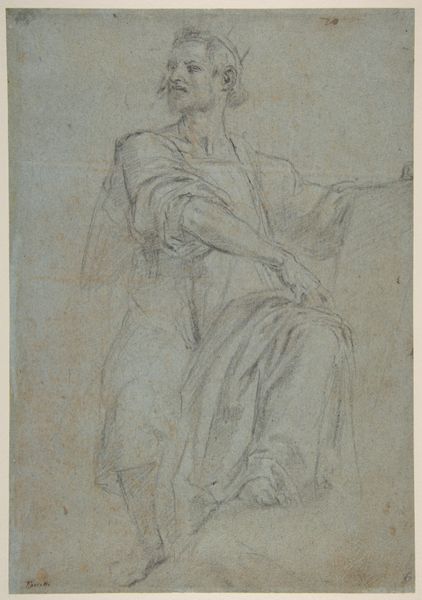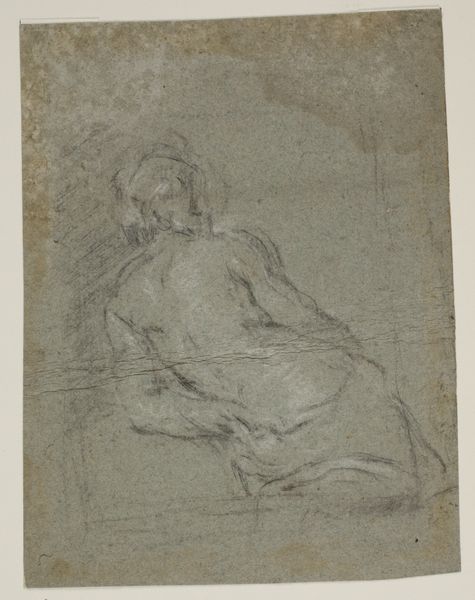
drawing, print, charcoal
#
portrait
#
pencil drawn
#
drawing
# print
#
charcoal drawing
#
figuration
#
pencil drawing
#
charcoal
#
history-painting
#
italian-renaissance
Dimensions: 5 1/4 x 5 11/16in. (13.3 x 14.4cm)
Copyright: Public Domain
Curator: This is Cristoforo Roncalli's "God the Father," a drawing rendered in charcoal, dating from somewhere between 1553 and 1626. Editor: The rust-colored chalk is striking. He seems weary, somehow, despite being seated regally with his scepter. The composition, with God gazing upwards, feels incomplete. Curator: I think that impression might stem from Roncalli's own social and religious position within the Counter-Reformation. How do we visualize divine authority during a period of intense religious questioning and reform? The upward gaze speaks, perhaps, to a renewed sense of needing to justify the faith's structure. Editor: That's fascinating. His body is facing us, yet his eyes look upward, outside of the picture plane. This internal division is a powerful artistic choice. This also begs the question as to why Roncalli has depicted God in such a weakened state. It makes him so... human. I feel sympathy towards him, rather than reverence. Curator: The historical context definitely shapes the understanding of such images. Roncalli, working in a time defined by the Council of Trent, faced strict constraints regarding religious depictions. To show God as vulnerable might be an artistic exploration of these anxieties, a very humanization of the supreme authority when it was becoming a thing that had to justify itself to a growing dissent in its system. The materiality is simple and unadorned and reflects that lack of adornment in an image that is supposed to be revered and looked up to, that, along with a weak body, really speaks to the historical moment and its impact. Editor: That’s insightful, framing it within that historical tension. Seeing the drawing as a reflection of that struggle is certainly more compelling than viewing it in isolation. It makes the historical framework almost impossible to dismiss, because as a piece of the broader puzzle, "God the Father" speaks with great resonance. Curator: Absolutely, and considering his role as a history painter, it reflects this understanding through a portrait lens that humanizes such religious authority during its process of justification. Editor: Thank you for sharing these insights! It definitely changes how one looks at it.
Comments
No comments
Be the first to comment and join the conversation on the ultimate creative platform.
